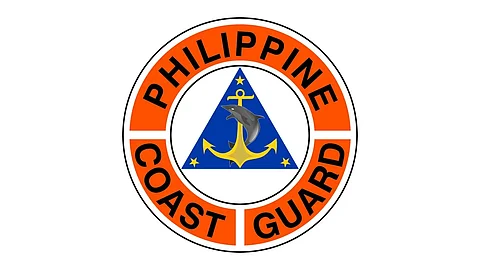
- NEWS
- the EDIT
- COMMENTARY
- BUSINESS
- LIFE
- SHOW
- ACTION
- GLOBAL GOALS
- SNAPS
- DYARYO TIRADA
- MORE

The Philippine Coast Guard (PCG) on Saturday pushed back against Chinese claims that it was the Philippines that recently escalated tensions near Scarborough Shoal (Bajo de Masinloc) that led to the collision between two Chinese vessels in the disputed waters.
Speaking at a news forum in Quezon City, PCG spokesperson for the West Philippine Sea (WPS), Commodore Jay Tarriela, categorically denied Beijing's accusations, asserting that the Philippines operates within its exclusive economic zone (EEZ) and follows rules-based conduct.
“It is not the PCG or the Philippine government that escalates the tension in the WPS. The reason why tension is rising is because of their dangerous actions and illegal presence within our own EEZ,” Tarriela stressed.
He added that the real source of regional instability is “the deployment of Chinese Coast Guard (CCG) vessels and People’s Liberation Army (PLA) Navy warships” within Philippine maritime territory.
Tarriela’s remarks came in response to a statement from Chinese Ministry of Defense spokesperson Jian Bin, who alleged that Philippine vessels “illegally intruded” into what China refers to as its territorial waters near Huangyan Dao — a Chinese name of Bajo de Masinloc (Scarborough Shoal), on 11 August.
Jian accused the PCG of making “dangerous maneuvers” that created a close-quarters situation at sea.
However, Jian did not mention the reported collision between two Chinese vessels — a CCG ship and a PLA Navy warship — an incident Tarriela disclosed earlier in the week.
According to the PCG, the collision occurred after CCG vessel 3104, which chased BRP Suluan, and executed a reckless high-speed maneuver that caused it to crash into PLA Navy warship 164.
The BRP Suluan sustained minor damage, including a bent flagpole, during the operation that was part of a humanitarian mission with the Bureau of Fisheries and Aquatic Resources (BFAR) to deliver aid to Filipino fishermen under the government's Kadiwa program.
Despite the confrontation, Tarriela said the PCG offered humanitarian assistance to the Chinese side, including help with man-overboard recovery and medical aid.
Jian, in a follow-up statement, said the Philippine Coast Guard’s actions “severely violated China’s sovereignty” and warned that Beijing “reserves the right to take necessary countermeasures.”
The Philippine government, through the Department of Foreign Affairs (DFA), made it clear it would not accept blame for the “unfortunate outcome” of the collision.
The DFA also renewed the country’s demand for compensation for damages and the return of firearms and equipment seized by Chinese forces during a separate incident on 17 June 2024.
Tarriela echoed this position, rejecting any notion of the Philippines owing damages.
“It's actually their recklessness and their dangerous maneuvers that resulted in the collision, but kidding aside, we are not going to pay any accountability for it, for such an incident,” he said.
“It’s their own doing, it is their illegal actions that resulted in such a collision,” he continued.
In a new revelation, Tarriela said the PCG was unable to launch drones during its recent mission to Scarborough Shoal due to suspected Chinese signal jamming.
“We believe that the Chinese were blocking our drones from taking off. This is the first time I’m disclosing this publicly,” he said.
“This is the first time that I will be disclosing to the public that we were not able to launch our drones. It's because we are suspecting that the Chinese have jammed the signal for us to bring our drones out to take videos and photos,” he added.
Tarriela lamented that China likely interfered to prevent the release of photo and video evidence that would show their actions in Philippine waters.
“Well, obviously, the intent of the PRC in jamming the signal of our drones is because they know our intention was to get photos and videos, and they also know this information will also be released to the public,” he added.
The latest exchange marks another escalation in the ongoing maritime dispute between Manila and Beijing, centered on the South China Sea (SCS), where the 2016 Permanent Court of Arbitration ruling invalidated China’s sweeping claims, a decision China continues to reject.
Despite repeated diplomatic protests by the Philippine government, Chinese vessels continue to maintain a presence within Manila’s EEZ, particularly around Bajo de Masinloc — a traditional fishing ground for Filipino fishermen residing within the Zambales coasts.
